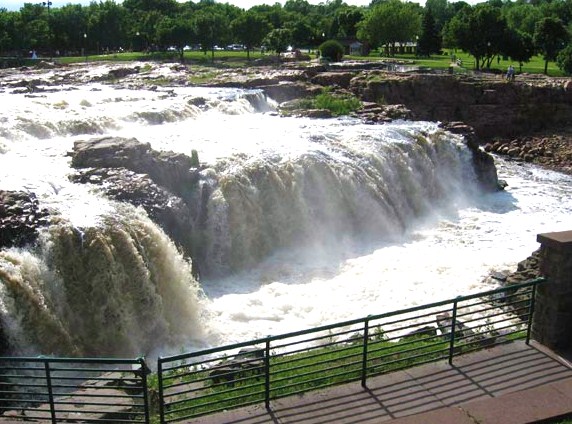|
East Sioux Falls, South Dakota
East Sioux Falls was a city located in southeastern Minnehaha County, South Dakota located about 6 miles east of Sioux Falls, South Dakota, Sioux Falls along South Dakota Highway 42 on the Big Sioux River. History During the 1880s, the quarrying of a distinctive pink stone known as jasper or quartzite had developed into a successful business in Sioux Falls. In 1887, the Sioux Falls Granite Company opened four quarries six miles due east of downtown Sioux Falls in Split Rock Township. This area had an abundance of quartzite along the bluffs overlooking the Big Sioux River and exposure to the Earth's surface ensured that the stone could be easily mined. Hundreds of workers and their families settled in a nearby community known at the time as Ives. In 1888, Sioux Falls officials convinced the Illinois Central Railroad to extend the tracks west from Iowa and through the city. Influenced by the mining, the rail line was routed past the Split Rock quarries, opening markets for the stone ... [...More Info...] [...Related Items...] OR: [Wikipedia] [Google] [Baidu] |
Minnehaha County
Minnehaha County is a county on the eastern border of the state of South Dakota. As of the 2020 census, the population was 197,214, making it the state's most populous county. It contains over 20% of the state's population. Its county seat is Sioux Falls, South Dakota's largest city. The county was created in 1862 and organized in 1868. Its name was derived from the Sioux word ''Mnihaha,'' meaning "rapid water," or "waterfall" (often incorrectly translated as "laughing water"). Minnehaha County is part of the Sioux Falls Metropolitan Statistical Area, the state's largest. Geography Minnehaha County lies on the east side of South Dakota. Its eastern boundary abuts Minnesota as well as the northern and western boundaries of Iowa. The Big Sioux River flows south-southeast through the east central part of the county. Its terrain consists of rolling hills, devoted to agriculture except around built-up areas, and dotted with lakes and ponds in its western portion. Its terrain gene ... [...More Info...] [...Related Items...] OR: [Wikipedia] [Google] [Baidu] |

